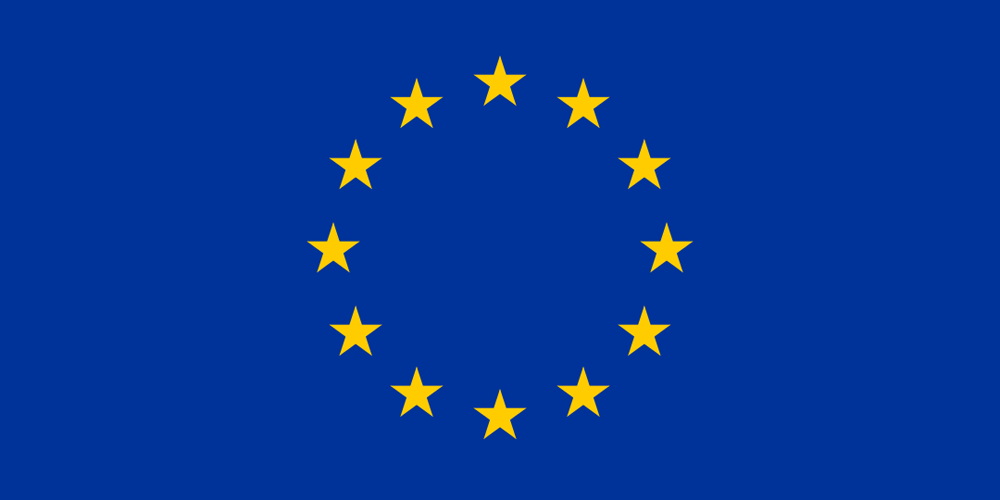Currency in France: EUR Send & Spend FX Guide
Resources for Expats, Travelers, and Entrepreneurs Navigating Life and Trade in France with the Euro.

What's in this France currency guide?
What currency is used in France?
The official currency of France (country code: FR) is the Euro, with symbol € and currency code EUR.
What is a good Euro exchange rate?
The BestExchangeRates.com currency comparison table below helps you see the total cost of your currency transaction by showing the exchange rates offered by different providers. It also makes it easy to spot potential savings from market-leading FX services compared to bank rates.
To see a full list of rates, enter your transaction type, currencies and amount then click ‘GET RATES’:
Loading rates...
|
|
|
Good things to know about the Euro
As of June 16, 2025, the Euro (EUR) has experienced notable developments affecting travelers, expats, and business owners:
- Interest Rate Adjustments: The European Central Bank (ECB) has reduced its key interest rates multiple times since April 2025, with the deposit rate now at 2%. This easing cycle aims to stimulate economic growth amid global uncertainties. (ft.com)
- Inflation Trends: Eurozone inflation has moderated, with the latest data showing a decrease to 2.4% in November 2024, bringing it closer to the ECB's 2% target. (nbcdfw.com)
- Eurozone Expansion: Bulgaria is on track to adopt the euro on January 1, 2026, following successful convergence assessments. This expansion may influence currency dynamics and economic interactions within the euro area. (en.wikipedia.org)
These developments are crucial for individuals and businesses engaged in international transactions, as they can impact exchange rates, purchasing power, and overall economic conditions.
For more EUR information check out our selection of Euro news and guides.
Frequently Asked Questions
What currency should I use in France?
The domestic currency in France is the Euro.
What is the Euro currency code and symbol?
The three letter currency code for the Euro is EUR — symbol is €.
What does the Euro look like?
Here is an example Euro banknote:

Which countries use the Euro?
It is the domestic currency in Eurozone, Aaland Islands, Andorra, Austria, Belgium, Croatia, Cyprus, Estonia, Finland, France, French Guinea, French Southern Territories, Germany, Greece, Guadeloupe, Vatican City, Ireland, Italy, Latvia, Lithuania, Luxembourg, Malta, Martinique, Mayotte, Monaco, Montenegro, Netherlands, Portugal, Reunion, Saint Barthelemy, Saint Martin, Saint Pierre and Miquelon, San Marino, Slovakia, Slovenia and Spain.
Is the Euro a closed currency?
No, the Euro is freely available and convertible. See guide: What is a closed currency?
What are equivalent amounts of MYR and EUR?
Here are some popular conversion amounts for MYR to EUR (Malaysian ringgit to Euro)*.
*Converted at the current MYREUR interbank exchange rate. Calculate actual payout amounts for Send Money and Travel Money exchange rates.

Travel money for France
Using Wise for Euro travel money is a smart choice for savvy travelers. With its competitive exchange rates and low fees, Wise allows you to convert and manage multiple currencies effortlessly.
Be careful when using your own bank's Debit/Credit Card, as your bank may also charge an extra 3% as an “Overseas Transaction Charge” plus “Overseas ATM” fees for withdrawing cash on top of the standard Visa/Mastercard 2.5% from market mid-rate.
For card purchases, if you are offered a choice of currencies always select to Pay in Euro otherwise you will typically get much worst dynamic currency conversion (DCC) exchange rates.
If you really want Euro cash before departure, you can save money by ordering online. You generally get better rates and can pick up the EUR cash locally or even on travel day at the airport.

Practical Travel Guide to France
Planning a trip to France
Planning a trip to France can be exciting and overwhelming. Here are a few things to consider when planning your trip:
If you plan on using public transportation, consider purchasing a Navigo pass, which allows for unlimited travel on buses, trains, and the metro within certain zones.
France has a wealth of cultural and historical landmarks, many of which require admission fees. To save money, consider purchasing a museum pass, which allows for discounted or free admission to a variety of museums and landmarks.
It's a good idea to learn a few basic phrases in French, as not everyone in France speaks English fluently. Greetings such as "Bonjour" (hello) and "Merci" (thank you) will go a long way in helping you to communicate with locals.
France has a variety of regional cuisines, so be sure to try some local specialties while you're there. Some popular dishes include coq au vin (chicken in red wine), escargot (snails), and ratatouille (a vegetable stew).
If you plan on driving in France, keep in mind that traffic drives on the right-hand side of the road and seat belts are required for all passengers.
Finally, remember to always carry your passport with you, as it is required for identification purposes.
France has a strict plastic bag ban in place, so it's a good idea to bring your own reusable bags when shopping.
Top things to do in France
France is a country with a rich cultural and historical heritage, and there are many things to see and do. Here are a few top things to consider while visiting France:
Visit Paris: Paris is the capital and largest city of France, and is known for its iconic landmarks such as the Eiffel Tower, Notre Dame Cathedral, and the Louvre Museum. Take a leisurely stroll along the Seine River, sample some pastries at a local patisserie, or enjoy a leisurely lunch at a café.
Explore the French Riviera: The French Riviera, or Côte d'Azur, is a Mediterranean coastline known for its sunny climate and glamorous resorts. This region is home to Nice, Cannes, and Monaco, and is a popular destination for beach-goers and those looking for a taste of the high life.
Tour the Loire Valley: The Loire Valley is a region in central France known for its picturesque landscapes and historic châteaux. Take a leisurely drive through the countryside, visit the famous Château de Chambord, or sample some local wines.
Visit Mont-Saint-Michel: Mont-Saint-Michel is a small island commune in Normandy, famous for its medieval abbey and beautiful beaches. Take a tour of the abbey, explore the winding streets of the village, or enjoy a seafood meal with a view of the ocean.
Visit the D-Day beaches: The D-Day beaches in Normandy are a poignant reminder of the sacrifices made during World War II. Take a tour of the beaches and visit the nearby museums to learn more about this important chapter in history.
- The French Alps offer some of the best ski slopes in Europe. If you're in Europe in the winter months and at a loss for what to do, consider getting a group together and renting a ski chalet, or staying at one of the slope-side hotels or hostels.
These are just a few of the many things to see and do in France. There is something for everyone, whether you're interested in history, culture, or the great outdoors.


Everyday Costs in in France
How much does it really cost to live, work, or travel in France? Here's what to expect for daily expenses and expat living.
Currency Guide for France (ISO Code: FR)
For a one-week mid-range stay in France, travelers should budget approximately €1,000 to €1,500. This will comfortably cover accommodations, meals, transport, and leisure activities while allowing room for splurges on experiences such as fine dining or museum visits. Here's a quick rundown of typical daily expenses in the local currency (€):
- 🍽️ Meal at a local restaurant: €15-€25
- ☕ Coffee: €2-€4
- 🚍 Public transport fare: €1.90 (single ticket)
- 📱 Prepaid SIM card: €20-€30
- 🏨 Budget hotel or Airbnb: €70-€150 per night
Overall, France is considered to be a relatively expensive destination compared to countries like the United States and Canada, but it can offer good value depending on your travel choices. For instance, compared to the U.S., where similar mid-range meals might cost slightly more, the overall experience in France, steeped in culinary delights and cultural richness, can make your expenditure feel worthwhile, even if prices are slightly higher. In contrast, traveling in Canada is comparable in terms of costs, but the unique French flair and historic ambiance in cities like Paris can add substantial value to any visit.
Expat Living in France
For expats living in France, typical monthly living costs can range from €1,500 to €3,000, depending on lifestyle and living arrangements. This includes rent, groceries, dining out, and other personal expenses. A one-bedroom apartment in the city center may cost around €1,200-€1,800, while public services like electricity and heating can add another €150-€250 to your monthly budget.
When it comes to banking, using credit and debit cards is widely accepted; however, it is advisable to have some cash on hand for smaller shops or markets. For sending and receiving money, services like Wise or OFX often provide better exchange rates and lower fees than traditional banks. Local exchanges can be convenient for small amounts of cash; however, if you're managing larger funds or transactions, online transfer services tend to be more efficient and cost-effective. Ultimately, the choice between local exchanges and online services will depend on individual circumstances and preferences, but for expats, leveraging online services can enhance budget management significantly.
USD/EUR Market Data
The below interactive chart displays the USD/EUR change and UP📈 DOWN📉 trends over the past 1 Year.

Recent Euro Market News
Recent Developments Affecting the EUR Price
1. Eurozone Inflation Rates: Recent data shows inflation in the Eurozone remains elevated, affecting ECB monetary policy decisions. (Source: Reuters, ECB)
2. ECB Interest Rate Outlook: Comments from ECB officials indicate a potential pause in interest rate hikes, causing speculation about the EUR's stability.
3. Economic Growth Concerns: GDP growth figures for the Eurozone show signs of slowing, impacting confidence in the Euro.
4. Geopolitical Tensions: Ongoing geopolitical tensions, particularly regarding trade relations with the US and UK, influencing market sentiment around the Euro.
5. Energy Prices: Fluctuations in energy prices due to global supply concerns are affecting Eurozone economies and, consequently, the EUR. (Source:
6.Eurozone Expansion: As of June 2025, Bulgaria is set to become the 21st member state of the eurozone, with the euro adoption scheduled for January 1, 2026.
For more EUR information read our News and guides to the Euro.
Send Money to France - Best Rates
To get a good (and fair) exchange rate when sending money to France you need to find and compare exchange rates for International Money Transfers (IMTs).
The available FX rates for sending money abroad can be very different to the mid-market (wholesale) rate which you see reported online and in the News.
You should especially compare your own bank's exchange rates to those available from Money Transfer specialists to see how much you can save - we make that calculation easy in the below table.
Get a better deal for foreign transfers to France
When sending money to France it’s important to compare your bank’s rates & fees with those we have negotiated with our partner money transfer providers. To get a better deal you should follow these 4 simple steps :
- Open an account with a BER reviewed FX provider (id docs may be required)
- You specify the local or Euro amount you want to transfer
- Make a local currency domestic transfer for the requested amount to the provider's bank account in your country
- Once your funds are received by the provider the converted EUR amount will be transfered to the recipient account you specify in France.
Use the above calculator to compare the exchange rates of FX specialist providers rates versus your bank's standard rates you can hopefully save around 5% and maybe more - end result is more Euro deposited into the recipient bank account and less margins and fees kept by the banks!

Managing money while living and working in France
Managing your money effectively while living and working abroad can be challenging, but there are several steps you can take to ensure that your finances are in order.
Understand Euro currency exchange rates: Exchange rates can have a big impact on your finances, so it is important to keep an eye on the EUR exchange rate and consider using a money transfer specialist or a credit card that does not charge foreign transaction fees to get the best exchange rate.
Use a local Euro bank account: A local EUR bank account can make it easier for you to manage your finances and pay bills while you are in France. It may also be more convenient to use a local EUR bank account to make purchases and withdraw cash.
Research local laws and regulations: It is important to understand the local laws and regulations that apply to financial transactions in France. This can help you avoid legal issues and ensure that you are complying with local requirements.
Consider the tax implications: It is important to understand the tax implications of living or doing business in France. This can help you plan your finances and ensure that you are paying the correct amount of tax.
Seek financial advice: If you are unsure of how to manage your finances in France, it is a good idea to seek the advice of a financial professional who is familiar with the local financial system. This can help you make informed decisions and avoid financial pitfalls.
We have put together some key points to help managing your money effectively, you can reduce financial stress and enjoy your experience living or doing business in France.

How is Expat life in France?
Expat life in France can be a rewarding experience, with the country offering a rich culture, history, and a high standard of living. However, it can also be challenging as the country has a different culture and way of life, and the language barrier can be difficult for some.
One of the biggest challenges for expats in France is the language, as French is the official language, and many people do not speak English well. It's recommended to take French classes or at least learn some basic French to make it easier to navigate daily life.
Another challenge for expats in France is the bureaucracy, as the country has a complex system of paperwork and regulations. This can be especially difficult for those who are not familiar with the process, but with the help of a good lawyer or an expat association, it can be navigated.
The cost of living in France can also be high, especially in larger cities such as Paris. Rent, food, and transportation can be expensive, but it is possible to find ways to save money such as by cooking at home and taking advantage of public transportation.
On the other hand, France offers a high standard of living, with access to excellent healthcare, education, and social services. The country is also known for its delicious cuisine, wine, and fashion. Additionally, it's a great place to enjoy the arts and culture, with many museums, galleries, and theatres to visit.
Expat communities can be found in most cities and towns, and joining one can be a great way to meet people and get support during the transition period.
Overall, expat life in France can be challenging, but also rewarding. It takes time to adjust to the new culture and way of life, but with patience and persistence, it is possible to make a home in France and enjoy all that this beautiful country has to offer.